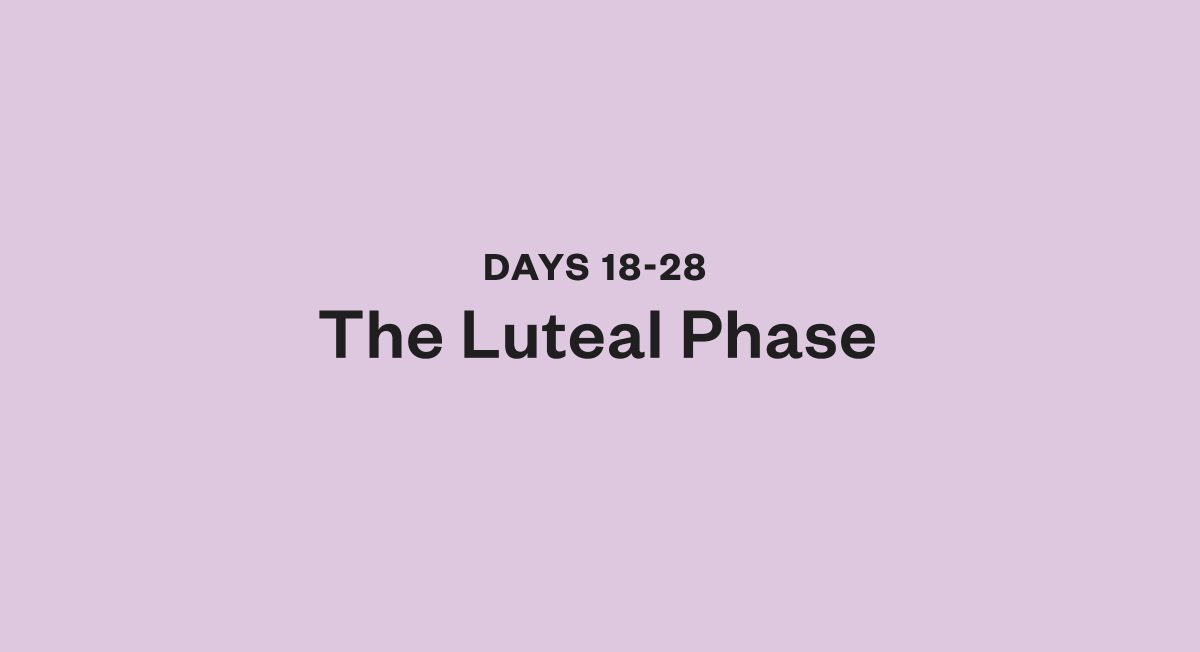How to Practice Cycle Syncing: Align Your Diet and Exercise With Your Menstrual Cycle
Last Update: May 2, 2025
The menstrual cycle is much more nuanced than just “menstruating” or “not menstruating.” It involves waves of hormonal shifts throughout the entire 28(ish) days that affect your mood, your energy levels, your appetite, and much more. [1]
Enter “cycle syncing”, a concept referring to eating, exercising and resting in response to where you are in your cycle. The idea is to not only better understand where your hormonal levels are at certain times throughout your cycle, but to use that understanding to take control of your emotions, minimize feelings of anxiety and hostility typically associated with PMS, and reduce feelings of pain and fatigue as they relate to your cycle.
Cycle Syncing 101

There are four phases of the menstrual cycle, and each one involves different hormonal shifts. We tapped Hannah Muehl, MS, RDN of the Conscious Nutritionist, to offer insight into getting started with cycle syncing. Muehl specializes in eating for hormonal balance to help with her own PCOS (polycystic ovary syndrome), and she now helps others to manage their own hormone health in her work as a Registered Dietitian. [2]

Read on to learn how to navigate eating, exercising, and resting for each phase of your cycle.

What it is: The menstrual phase kicks off the whole menstrual cycle; this is when your endometrium (the lining of your uterus) sheds, causing you to bleed.
Hormones: “You can think of your menstrual phase as your inner winter,” Muehl says. Estrogen and progesterone are both low during this time (and likely, so are your mood and energy levels).
How to eat: “Focus on warming foods, especially those high in iron to replace any iron lost during your menstrual cycle,” Muehl says. And as a tip, she says to “always pair your iron-rich food with a source of vitamin C to increase absorption.”
What to keep in mind:
- High-iron foods (like grass fed beef, turkey, lentils, molasses, and oysters)
- Supplements or foods rich in Vitamin C (like citrus fruits)
- Stay extra hydrated to decrease headaches, bloating and cramps
- Avoid inflammatory foods, like salt, sugar, and caffeine
How to exercise: “Your energy will likely be lowest during this cycle, so move your body in any way that feels good—or just take a nap!” [3]

What it is: The phase when the lining of your uterus starts to grow again, a hormone called FSH prompts follicles to grow in the ovaries, and one of the follicles forms a mature egg.
Hormones: “You can think of your follicular phase as your inner spring,” Muehl says. “This phase begins after your period until ovulation, and estrogen levels are slowly beginning to rise to prepare your body for healthy ovulation.”
How to eat: “Energy levels begin to rise during this phase,” Muehl explains. You’ll want to eat to support follicular growth and to maintain hormonal balance. “Focus on vegetables like broccoli, arugula, and radicchio, and lean proteins like fish or chicken.”
What to keep in mind:
- Complex carbohydrates (like fruits and whole grains)
- Lean fish, chicken or other protein sources
- Avoid or lessen alcohol consumption, as estrogen levels are high
How to exercise: “As you start to recoup energy after your period, you may have more desire to go for a brisk walk or jog, or take a kickboxing or dance class.”

What it is: A hormone called the luteinizing hormone causes the egg to release, which is known as ovulation. “You can think of your ovulatory phase as your inner summer,” Muehl says. “This is a short phase, sometimes only a few days.”
Hormones: Estrogen is at its highest point, and progesterone and testosterone are on the rise.
How to eat: “Focus on foods similar to your follicular phase, with fresh vegetables like cucumbers, peppers and romaine and dark-colored berries.”
What to keep in mind:
- Salmon, nuts, and other foods high in fatty acids
- Antioxidant-rich foods (like berries and dark chocolate)
- Avoid high-glycemic foods (like sugar, white bread, and highly processed foods)
How to exercise: “The estrogen surge that occurs directly before ovulation can provide a big energy boost,” Muehl says. “This is the time of your cycle to try out that cycling or HIIT class.”

What it is: The released egg travels from the ovary to the uterus through the fallopian tubes. After this, the egg may be fertilized by sperm, causing you to become pregnant; if you don’t become pregnant, the uterine lining sheds, causing you to get your period.
Hormones: “You can think of your luteal phase as your inner autumn,” Muehl says. “After ovulation occurs, progesterone begins to rise and estrogen is lower.” This is when you’re most likely to experience symptoms of PMS, like bloating, mood swings, and fatigue.
How to eat: Muehl recommends incorporating foods high in B6 and C, as these help to support progesterone levels. “You may [also] crave more warming and higher fat foods during this time, like stews or soups,” Muehl says.
What to keep in mind:
- Foods high in Vitamin B6 (like salmon, chickpeas, and turkey)
- Foods high in VItamin C (like lemons, kiwis, and peppers)
- Foods high in fiber (like bran, whole grains, and legumes)
- “Increasing progesterone levels also often cause constipation during this phase, so don’t forget your seeds and vegetables!” Muehl advises
How to exercise: “As energy may be lower in this phase, lean into walks, pilates and yoga.”
This content is not intended to be a substitute for professional medical advice, diagnosis, or treatment. Always seek the advice of your physician or other qualified healthcare provider with any questions you may have regarding a medical condition or treatment and before changing your diet or healthcare regimen, and never disregard professional medical advice or delay in seeking it because of something you have read on this website.